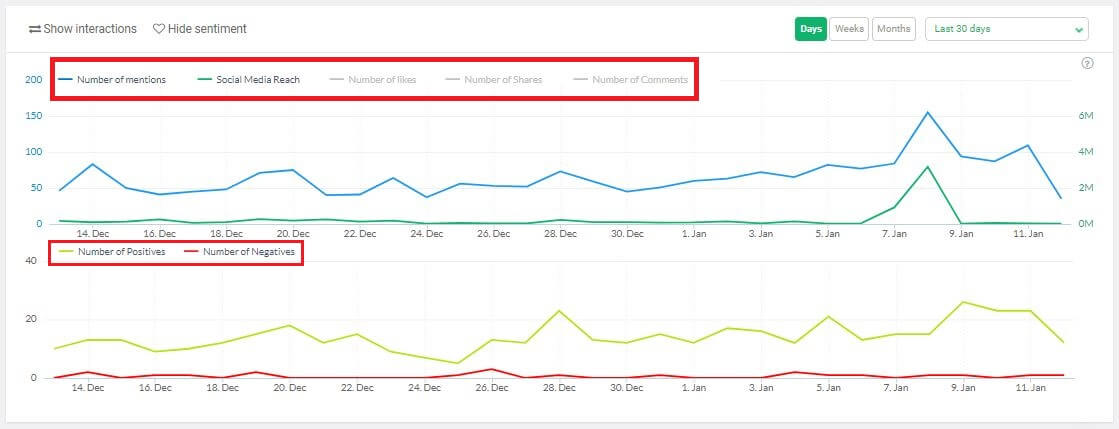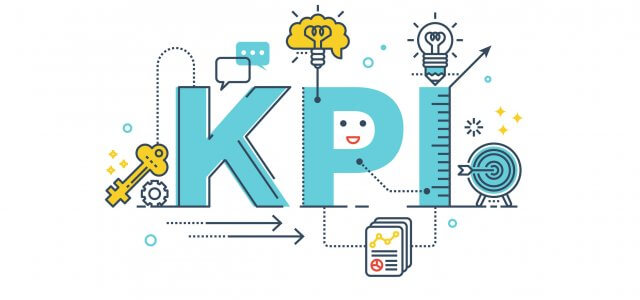Why your customers EXPECT you to use sentiment analysis tools
Sentiment analysis tools sound like something out of a sci-fi movie – like Chappie, Bicentennial Man or A.I. Artificial Intelligence, where robots are seen running their own sentiment analyses so they can learn how to mimic and convey real human emotions.
Which isn’t so far-flung from reality.
A good sentiment analysis tool will tell you whether content that someone has shared online (like a Tweet, post, or comment, etc) expresses positive, negative, or neutral opinions. This is done using algorithms that perform text analyses, computational linguistics, and natural language processing to understand the sentiment attached to an author’s words.
Analyzing patterns in sentiment from customer feedback allows you to identify what your customers like (and dislike). And this is key to creating an amazing user experience.
Here’s a short video that sums up really well just how sentiment analysis lets you find out what your customers like and dislike:
Which is why your customers EXPECT you to use sentiment analysis tools.

But it also begs the question: is a computer algorithm able to understand what you just wrote? Can it read sentiment or emotions? Well, if a predictive keyboard bot can write a new chapter for the Harry Potter series that fans have found both hilarious and entertaining, then the answer appears to be yes – to a certain degree.
Where is sentiment analysis used?
Sentiment analysis is used in various areas, including marketing, marketing research, social media analysis, customer service, research & development, PR, reputation management, measuring brand awareness, tracking campaign progress and predicting trends. Tools that monitor and analyze sentiment allow companies to access valuable customer opinions that they can then use to create and shape effective business strategies.
Who benefits from sentiment analysis?
Companies of all sizes, entrepreneurs, celebrities, artists and agencies are all invested in learning about – and staying up to date on – general public opinions regarding their brands, products, services, and marketing campaigns. Sentiment analysis, also known as opinion mining or emotion AI, is the process that makes this possible.
Analyzing sentiment begins with 2 basic steps:
- Finding relevant data.
- Analyzing the sentiment behind it.
How do you find data for sentiment analysis?
Finding data – relevant data – for sentiment analysis can be achieved with media monitoring. More comprehensive media monitoring tools, like Brand24, will have built-in sentiment analysis filters that you can apply directly to the data, letting you find and analyze customer opinions about your brand, product, or competitors.
Media monitoring tools work by running deep searches across the web to find public mentions (don’t worry, you won’t accidentally stumble upon any private conversations) of keywords and phrases that are relevant to your business. The results can be from social media, like Facebook and Facebook Fan Pages, Twitter and Instagram, as well as blogs, forums, TripAdvisor, Yelp, news and video websites, among other sources – and they’re deposited directly inside your account dashboard. Having all your results in one place makes it much easier to apply social listening to your data.
While digital media monitoring is the process of finding and collecting public online mentions of your specified keywords and phrases, social listening is about analyzing these results to develop meaningful insights from key customer opinions. Sentiment analysis plays an important role in this.
What are the benefits of sentiment analysis?
Knowing what your customers think is crucial to virtually every aspect of any business, down to its very success or failure. That’s why companies leverage the information that they get from social media sentiment analysis across various departments, such as PR, marketing, sales, customer service, and R&D.
A few significant benefits from sentiment analysis include being able to measure sentiment as a KPI for your marketing campaigns, as well as letting you protect and manage your e-reputation. And what I find particularly useful, is that assuming the sentiment analysis tool you’re using has multilingual capabilities, you will be able to measure your brand sentiment in languages that you don’t speak fluently.
とても かわいいですね! すごく ほしいです
(* ´▽`)私の場合 、Y-モバイルなのですが 、ドコモだけじゃなく 多機種にも 対応出来ないでしょうか?
(* ´▽`)— yuri (百合) (@yuri92a) January 12, 2018
How this social media post is displayed inside the Brand24 dashboard, containing various pieces of information:

Measure sentiment as one of the KPIs in your marketing campaigns
The key here is to start monitoring your marketing campaigns well before you begin to promote them. That way, not only will you have more complete data, you’ll also have a standard to measure your results against. Your goals will vary with each campaign, but an increase in positive sentiment is definitely an important KPI in itself.
More inclusive media monitoring tools not only have their own sentiment filter for sentiment analysis, but also include a comprehensive range of features that let you monitor and measure more than one KPI. For example, Brand24 lets you track several metrics at once:
- Do you know how many views you typically generate for each piece of content you put out, or for each social media account – across ALL channels? Has there been any growth or decline in these numbers? Monitor your social media reach to track this KPI.
- Has your marketing campaign generated buzz and increased your brand awareness? Your volume of mentions is also an important factor in measuring brand awareness.
- Is your audience engaged? Do they like, share, and comment on your content? Tracking your number of interactions tells you about the kind of audience you have and the type of content that works.
- And, of course, there’s sentiment analysis… not just for your own brand. Analyze sentiment for your brand, product, or service – as well as for direct competitors. Observe your levels of positive and negative brand sentiment over different periods of time. This will tell you what your customers like and don’t like about your products, feature updates, and campaigns.
Monitor brand sentiment to manage your reputation and prevent PR crises
Speaking of sentiment analysis, as you monitor your brand sentiment, keep an eye on sudden spikes and dips in levels of positive and negative customer opinions.
A surge in positive sentiment is what every PR department and marketing team dreams of. Monitoring your brand sentiment on the regular allows you to see when this occurs, which helps you narrow down what may have caused it. Note the date of the surge and look into your business activities around that time to find the cause:
- Was your brand or product recently mentioned by a major publication, or did you have a successful collaboration with an Instagram influencer, Facebook influencer or an influencer on Twitter? This would generate buzz and increase your volume of mentions.
- Did you release a product or feature update? It may have been exactly the kind of update that your customers were hoping for, in which case you would consider implementing more improvements along this direction.
- Or is it related to a recent marketing campaign? Was it more serious and formal than usual, or particularly hilarious, snarky, heartwarming, dramatic, maybe even extra silly? Your brand personality may be the cause of a sudden spike in positive sentiment, showing you the style of communication that your audience appreciates.

The same goes for sudden spikes in negative sentiment. Being able to identify sudden surges in negative sentiment is a key reason for analyzing brand sentiment.
But a best practice in sentiment analysis is monitoring and managing your brand on a regular basis, so you can deal with each piece of negative feedback ASAP, before they have a chance to pile up. Letting negative public feedback accumulate is a good way to damage your hard-earned reputation and lose customers.
Analyze all the possible reasons for spikes in positive and negative sentiment to manage your reputation, prevent PR crises, and identify what it is that your customers like (and dislike).
Analyze brand sentiment for different regions and language
The ability to analyze sentiment on a global level is one of the most significant benefits of using sentiment analysis tools. If your brand is building presence in various parts of the world, this involves many languages. Even if your company only does marketing, advertising and business communications in English – your customers may still prefer to express their opinions in other languages.
And if you’re not building a global presence, research from the 2016 American Community Survey by the U.S. Census Bureau still shows that, for numerous people over 5 years of age, the languages spoken at home are diverse and numerable:
- 237.8 million people speak only English at home
- 40.5 million speak Spanish at home
- 1.2 million speak French at home
- 1.1 million speak Korean at home
- 0.54 million speak Polish at home
There are many other languages included in the survey – this is just a tiny sample.
If you don’t speak Spanish, French, Korean, Polish or any other language, you can still analyze your brand sentiment in those languages (and more). Brand24 currently provides media monitoring in 24 different languages, and is constantly expanding the list. Analyze your results and run them through the built-in sentiment analysis filter to get a general idea of your brand sentiment in various languages and different parts of the world.
おかさん、おはようございます😃
200でしたっけ?
すごいです(^.^)
お気をつけて〜( ⸝⸝•ᴗ•⸝⸝ )੭⁾⁾— ハギ (@mikio84755920) January 12, 2018

Get a general glimpse into customer opinions
Sentiment analysis filters that are part of comprehensive media monitoring tools like Brand24 are powerful and innovative solutions that help you find out what your customers are thinking about your brand or product.

One of the most important things to remember when it comes to sentiment analysis, is that percentages are far more important than numbers.
In most cases, you don’t need to know exactly how many customers like or dislike your new product. But you do need to know whether the majority of your target audience find it useful and appealing, which is what sentiment analysis shows you. That’s why the information these tools provide is so valuable.
However, it is important to keep in mind that some things are more difficult for sentiment algorithms to detect than others, including sarcasm, hyperboles, and some acronyms. If you find that sarcasm wasn’t detected in a particular mention, Brand24 allows you to manually change the sentiment for individual results.
Analyze sentiment for free for 2 weeks
There are a number of sentiment analysis tools that you can use to monitor sentiment for your brand, product, service, or competitor. Each one is slightly different, so I recommend trying a few of them to see which one is the best fit for you.
Brand24 has a 2-week free trial that lets you explore the features of the tool (no credit card required), including sentiment analysis. Monitor your brand, product, or competitor closely during the trial and see if this easy-to-use tool is a good choice for you. If you need some pointers on how to set up and configure your media monitoring projects to find relevant results, these social listening tips will point you in the right direction.
Thanks for reading, and feel free to let me know if you have any questions about sentiment analysis or any other features – I’d love to hear them. Just leave me a note in the comments section below and I’ll get back to you ASAP. Now, have a great weekend everyone!






![What is Brand Awareness? Guide & 9 Powerful Tactics to Build It [2022]](https://brand24.com/blog/wp-content/uploads/2020/12/15-The-ultimate-guide-to-brand-awareness-1400x660x2-640x300.png)

